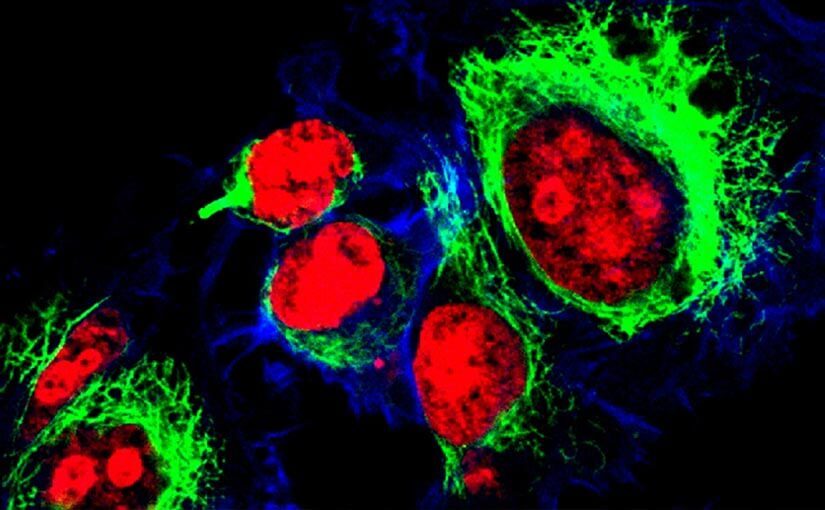February marked Ovarian Cancer Awareness Month. It’s estimated that 1,613 Australian women will be diagnosed with ovarian cancer in 2018 – and 1,069 women will die from the disease. It has historically been difficult to detect early, and therefore difficult to treat effectively. But since the late 1980s the 5-year survival rate has improved – from 34% to 44%.[1]
One of the aims of Ovarian Cancer Awareness Month is to educate Australians on the diagnosis and treatment of ovarian cancer. Pathology plays a huge role in this, especially in some of the most recent breakthroughs improving outcomes for women diagnosed with the disease.
Last month it was announced that the Peter MacCallum Cancer Centre in Melbourne is launching the Traceback program. The program will test 11,000 tissue samples from women diagnosed with ovarian cancer between 2001 and 2016 to see if they carry the BRCA gene mutations.[2]
The BRCA 1 and BRCA 2 genes produce tumour suppressor proteins, which play an important role in repairing damaged DNA. But specific mutations in these genes can stop them from being able to perform this role effectively and therefore cells are more likely to develop additional mutations which can lead to cancer.
Previous research indicates that approximately 15% to 20% of ovarian cancer patients carry a BRCA mutation, and the program leaders at the Peter MacCallum estimate they could discover as many as 1,500 women who have the mutation and don’t yet know.
By arming them with this knowledge the program is helping women to take any necessary preventative measures or to have regular testing or screening, to avoid another cancer in the future.
The program is important not just for the women themselves but for their families too; having a relative with a BRCA mutation raises a person’s risk of also having a gene mutation that could increase the likelihood of developing several types of cancer.
Approximately 44% of women with a BRCA1 mutation, and 16% of women with a BRCA2 mutation, will develop ovarian cancer by the age of 80. This is compared to 1.3% of the general population. The risk of breast cancer also increases for women with a BRCA mutation – around 70% of women with either mutation will develop breast cancer by 80. The mutations are also linked to increased risks of pancreatic cancer for men and women and prostate cancer for men.
The recent announcement from the Peter MacCallum is just the latest in a growing list of improvements to the accessibility of genetic testing for Australian patients.
Last year, for example, it was announced that the Medicare Benefits Schedule (MBS) would offer a rebate to women with breast or ovarian cancer who have the test. And if a mutation is found, their family members will also be eligible to have the test.
Cancers are most treatable when they are detected early, but this is often long before symptoms develop. Knowing about a genetic risk factor can save many lives – and that’s why more access to appropriate pathology testing is such a powerful weapon.
[1] https://ovarian-cancer.canceraustralia.gov.au/statistics
[2] http://www.abc.net.au/news/2018-02-06/ovarian-cancer-patients-tissue-samples-brca-mutation-test/9397470

